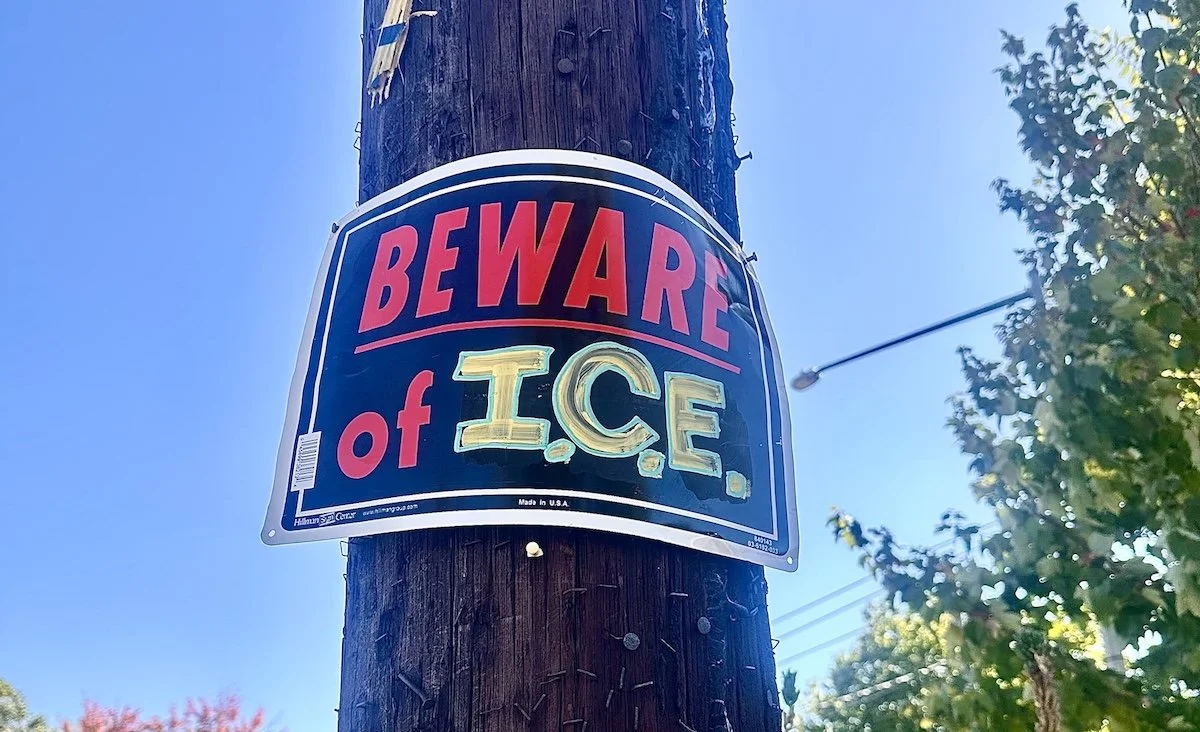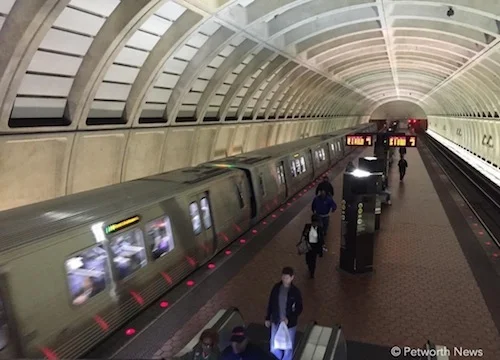WMATA releases results of vibrations and noise study
/In December 2016, Petworth News first reported that residents were increasingly frustrated that odd noise and vibrations were affecting their quality of life in the homes. They suspected it was Metro trains running underground near their homes. After repeated failed attempts to discuss with WMATA, they eventually brought in Councilmember Brandon Todd's office to help get some information and help organize a meeting. That meeting occurred in December 2016 and included some WMATA staff and concerned residents who were hoping to finally get answers. None came out of the meeting, but after repeated prompting by the Councilmember's office, WMATA agreed to study the situation.
In the intervening year and a half, residents have been waiting to hear the results of the study that WMATA commissioned with vendor Wilson Ihrig, an acoustics, noise and vibrations company. Ihrig conducted the study in June and August 2017 at 10 homes and various locations in Petworth, Columbia Heights and Michigan Park. Those results were released on March 23rd in a 415 page PDF, written by Wilson Ihrig.
In the end, with some caveats, the company said that Metro trains were not the cause of increased noise and vibrations, or damage to property.
There's a lot of data to unpack in the "Ground-Borne Noise and Vibration Evaluation" document, so I went through it looking for the highlights. (If you're interested, I recommend you review their analysis.)
The study was designed to answer the following questions:
- Are ground-borne noise and/or vibration levels inside homes exceeding design criteria?
- Is vibration causing any damage to residential structures along the alignment?
- Have any recent changes to the system caused an increase in noise and/or vibration?
At a high level, the report answers those questions as:
- No, the noise and vibrations are not exceeding design criteria.
- No, vibrations, while felt, are not high enough to cause structural damage.
- There was noise and vibrations felt, and since the resident complaints started near the same time the new 7000 series trains came into service, they may, or may not, be caused by Metro trains.
Forty-eight homes submitted complaints to WMATA regarding the sudden increase in noise and vibrations not experienced prior to the summer of 2016 -- which coincides with the introduction of the new 7000 series trains. Of the 48 homes that submitted complaints, Ihrig studied 10 homes and other locations in the area. They selected the ten location based on reports of noise and vibration in proximity to a subway line or station, as well as what side of the track the residence was located near. (See page 7 of the report.)
"Of the 48 residences from which reports have been received, ten were selected for field measurements by Wilson Ihrig to cover the geographic range of reports and combinations of tunnel and track construction. In addition to the measurements at selected residences, ground vibration was also measured at six outdoor locations to assess areas where no home was surveyed and to measure the rate of vibration attenuation with distance." (See page 5 of the study results).
Ihirg staff spent about 3-4 hours in each house, with both sound and vibration sensors placed around the home (from the basement up to second floors, and outside the home as well.
"In most cases, vibration was measured in two to four rooms inside the home and at one or two locations outside the home. Noise was typically measured in one or two rooms inside the home. At the outdoor-only locations, vibration was measured at multiple distances from the tunnels. In addition to measuring noise and vibration, the rails in the areas near the ten residences were inspected and the rail head surface roughness was measured at most locations using a device made specifically for this purpose." (See page 5.)
A sample of where Ihrig engineers placed microphones and vibration sensors around study homes. (from the Ihrig report)
Ultimately, the Ihrig personnel determined that while the 7000 series trains were indeed louder than older trains, some older trains that were running were even louder than the new 7000 series.
"On average, the 7000 Series noise levels are noticeably louder than the other series cars in eight of the nine homes in which train noise was detectable, although some individual vehicles of the older series do produce comparable levels." (See page 6.)
However, Irhig concluded that noise levels, while definitely present, were below levels accepted by Federal standards as well as WMATA's own standards, and that the vibration levels were below what is necessary to cause structural damage. "There is a large difference between vibration levels that can be felt and vibration levels that can cause even minor damage."
"The ground-borne noise criteria were not exceeded in any residence. The vibration criteria were exceeded at four residences by 8% to 29% of train passbys. There were no exceedances of the vibration criteria at the other six residences" (See page 5.)
"All measured vibration levels are well below that at which structural or architectural (cosmetic) damage, such as the propagation of existing cracks in plaster and drywall, could occur." (See page 5.)
Ihrig does point out transit systems are not designed to be unnoticeable -- in fact, they're made to fit into a modern city's noise-scape.
"Transit system design criteria are not intended to make transit systems inaudible, but, rather, to make the noise levels acceptable in the context of an urban setting that includes traffic, aircraft, and other transportation noise sources." (See page 6.)
In an email to residents who have been involved in pushing on WMATA for answers, Josh Fleitman from Councilmember Todd's office wrote about the frustration their office is feeling:
"Councilmember Todd is sympathetic to these valid concerns, and as you know he has been an outspoken advocate for getting you relief.
However, I want to be candid with you. At this point, our office has exhausted every tool at our disposal.
WMATA is not a DC Government Agency, which means there are no direct lines of authority between Councilmember Todd’s office and WMATA. They’re a regional agency controlled by a Board with representatives from DC, Maryland, Virginia, and the Federal Government. Councilmember Todd spoke to Board Chairman Jack Evans, who then asked about the vibrations issue at a recent WMATA hearing, and received the same answer as the attached letter. Unfortunately, at the end of the day, we can’t force WMATA to acknowledge the problem and fix it. The only thing we can do is advocate – write letters, make phone calls, get media attention and pressure. We’ve done all of that over the past year and a half."
One of the residents on the email from Todd's office replied with the following response (edited for clarity):
"I appreciate all that you and Councilmember Todd have done for Wards 4 and 5 residents to address this issue. Although I understand that you all are limited in the actions you can take to resolve this issue, something has to be done as it has gotten worse. My neighbor's ceiling is falling and my basement floor is sinking."
It's doubtful this report will settle the issue. The report provides page after page of sound and vibration results, so feel free to dig in. And feel free to keep the pressure up on WMATA if you feel it's justified.


























